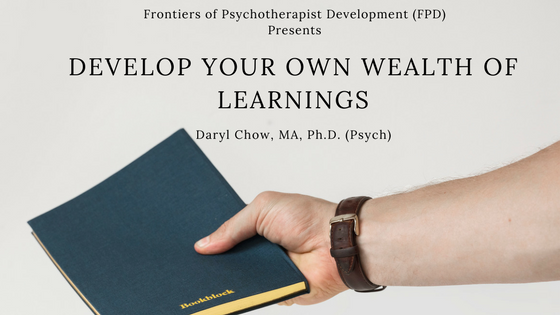In a previous post, I talked about the iterative cycle that we can take in our professional development (click HERE to revisit it, and download the free infographic).
Here’s something that I’ve recently revisited that struck a chord:

“The theorists can only build his theories about what the practitioner was doing yesterday.
Tomorrow the practitioner will be doing something different because of these theories.”
~Gregory Bateson, 1951/68.
Most good theories that we develop in our practice derives after the fact, not before.
Let’s put it in another way. Do we know what we are doing that is contributing to growth and change in our clients’ lives? If so, we need to take note of what we are doing well to cultivate that with our clients. And then glean the first principles that we are operating on, and not get caught up in methods. (More about first principles vs methods in a future post).
We also need to know what we are doing that isn’t contributing to growth and change in our clients.
Let’s admit it. We therapists are a self-critical bunch. (We are much kinder to others.) Ask a therapist about a recent case, “what did you do that contributed to your client’s improvement,” you will likely to meet with a pause before an answer, or if not, you might get, “I don’t know.”
On the flip side, ask a therapist about a recent case, “what did you not do well to help your client improvement,” you will almost certainly get a flood of explanations.
We need our eyes on both.
While it’s highly valuable to keep our eyes on our failings and mistakes, we also need to have a clue—and then develop sound PRINCIPLES OF OUR OWN— on what we are doing well that sets up the conditions of growth for our clients.
This is why creating a system of noting down your weekly learnings is quintessential to your development.
Here are what two renowned therapists have to say about developing your own ideas:
Carl Rogers: “I believe that the goal of training in the therapeutic process is that the student should develop his own [emphasis mine] orientation to psychotherapy out of his own experience. In my estimation, every effective therapist has built his own orientation within himself and out of his own experience with his clients or patients.”[1]
Virginia Satir, in her last interview before she passed on, she was asked what thought about neurolinguistic programming (NLP), which was modeled after her approach to therapy. Satir said, “I would not want to learn NLP, if you want to know the truth. I am not sure I could learn it”[2]
Note-Taking vs Note-Creation.
In our clinical practice, we spend a lot of time in Note-Taking, that is, writing progress notes of our clients. If you want to take your professional development to the next level, you also need to engage in Note-Creation. The latter is more about keeping tabs of what you are learning from your clinical practice. Note-Taking of your sessions are mostly a passive activity, whereas Note-Creation is a highly active form of putting your learnings down into words that are meant to serve you for the long run.
(Check out one of the first posts I wrote in Frontiers on the topic of noting down your learnings, A Memorable Practice. I go into more details about the type of writing app [I love simplenote.com!], format and constraints to help you in this form of note-creation.)
James Bugental (1967) once commented about the feedback loop that we go through in our self-discovery. “Man’s awareness about himself acts as a constantly ‘recycling’ agency to produce changes in himself.” It’s in the recursive process that we have an opportunity to learn…. if we do not FORGET them! This is why I advocate for active note-creation on a weekly basis. When you look back at your notes, you will likely be surprised by the gems that you’ve forgotten to pay attention to.
I love to learn about what you are learnings in this week! Share them in the comments below.
Blessings,
Daryl
~~~
Footnotes:
[1] page 87 of Rogers, C. R. (1957). Training individuals to engage in the therapeutic process. In C. R. Strother (Ed), Psychology and mental health (pp. 76—92). Washington, DC.
[2] Simon, R. ( 1985). Life reaching out to life: An interview with Virginia Satir. Common Boundary, 3, 36—43. American Psychological Association.



Can you send me a copy of that satir article?
Sure thing Jordan.